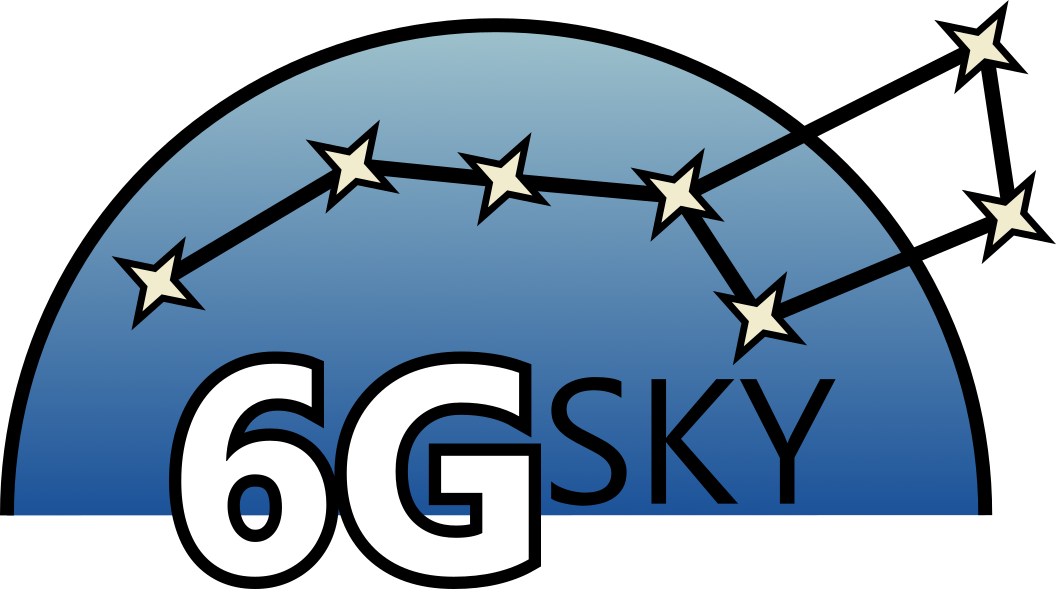6G for Connected Sky

Project Status: Running
Start Date: May 2022
End Date: April 2025
Budget (total): 8924 K€
Effort: 59.03PY
Project-ID: C2021/1-9
Name: Dominic Schupke
Company: Airbus Defence and Space GmbH
Country: Germany
E-mail: dominic.schupke@airbus.com
Lakeside Labs, Austria
RED Bernard, Austria
Twins, Austria
LCA LOGISTIK CENTER Austria Sud GmbH, Austria
Airbus Defence and Space GmbH, Germany
Fraunhofer Institut für Integrierte Schaltungen IIS, Germany
Ericsson Antenna Technology (EAG), Germany
Deutsche Telekom, Germany
Motius, Germany
Meshmerize GmbH, Germany
Ericsson Hungary, Hungary
AITIA International Inc., Hungary
Royal Institute of Technology, KTH (Kungliga Tekniska Högskolan), Sweden
Ericsson AB (EAB), Sweden
Skysense AB, Sweden
Swedish Post and Telecom Authority (PTS), Sweden
SAS, Sweden
Abstract
Flying vehicles are becoming ubiquitous unprecedentedly due to the advancements in aviation and space industries. In addition to already deployed geosynchronous Earth orbit (GEO) satellites, low Earth orbits (LEO) satellites are being deployed in large numbers to provide connectivity to ground users. Furthermore, high altitude platforms (HAPs) stand as another connectivity option for the ground users. Besides, unmanned aerial vehicles, also known as drones, and flying taxis are emerging as users in the sky, which require robust and reliable communication connectivity for their safe and secure operation. Although there are different connectivity solutions specific to certain limited domains, integrated connectivity solutions and a holistic network architecture are vital to unlock potentials of the recent advances and create new services for both ground and aerial users. To this end, 6G for Connected Sky project aims at solutions to enable reliable and robust connectivity for aerial and ground users via flexible and adaptive network architecture adopting multiple technologies such as satellite and direct air to ground communication (DA2GC). In addition, this project focuses on novel wireless network design and management schemes in 3-dimensional (3D) space including different types of flying vehicles with their unique requirements. Another focus is to provide robust, low latency and/or high-capacity communications to ground users in the rural areas without any infrastructure via non terrestrial networks (NTNs). Key issues that will be addressed are as follows:
- Design of heterogeneous 3D adaptive network architecture supporting flexible topologies via safe and explainable artificial intelligence (AI),
- Cell-free 3D wireless network design enabling adaptive and user-centric formation of network coverage with multi-link and multi-technology,
- Impact on standardisation and regulation of new radio technologies for aerial communications and regulations on air traffic management (ATM) and urban air mobility (UAM),
- Design of sixth generation (6G) communication links by combining radio technologies including Terahertz, millimeter wave communications and intelligent reflecting surfaces,
- AI-based mobility and interference management for aerial users with considerations of spectrum and air traffic management regulations,
- Design of mesh network considering Air-to-Air(A2A) and Air-to-Ground(A2G) communications,
- Demonstration and testing of 6G direct air to ground link with a flying UE via mm-Wave/Terahertz communications,
- Demonstration and testing of integrated multi-technology and mesh connectivity with reliability and delay performance measurements.



